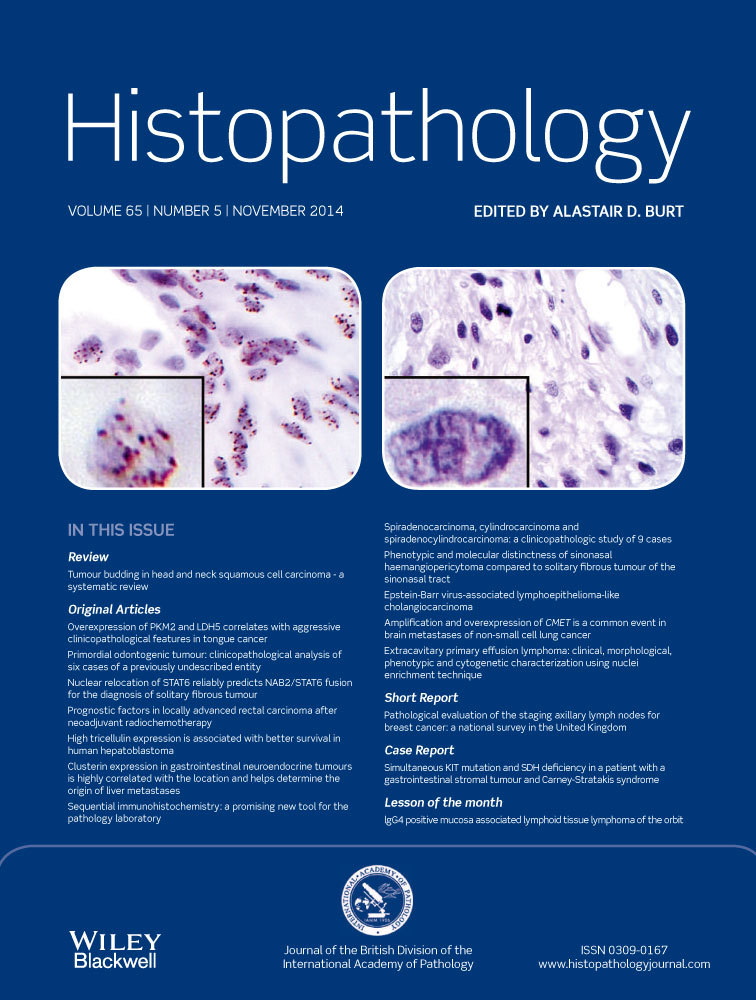Sequential immunohistochemistry: a promising new tool for the pathology laboratory
Abstract
Aims
Current immunohistochemical methods to study the expression of multiple proteins in a single tissue section suffer from several limitations. In this article, we report on sequential immunohistochemistry (S-IHC), a novel, easy method that allows the study of numerous proteins in a single tissue section, while requiring very limited optimization.
Methods and results
In S-IHC, a tissue section is stained for multiple antibodies, with intermediate scanning of the section and elution of chromogen and antibodies. Overlays are made of the digital images, allowing assessment of multiple proteins in the same tissue section. We used S-IHC to study nine nodular lymphocyte-predominant Hodgkin lymphomas (NLPHLs) and 10 T-cell-rich and histiocyte-rich diffuse large B-cell lymphomas (T/HRBCLs) for expression of cyclin D1, CD20, and CD68. We observed cyclin D1 expression in single tumour cells in 44% of NLPHLs and 60% of T/HRBCLs. Comparison of S-IHC with classic single immunohistochemical staining revealed discrepancies in eight cases (42%), demonstrating the difficulty of differentiating tumour cells from histiocytes on morphological grounds, and stressing the additional value of S-IHC.
Conclusions
For research and diagnostic purposes, S-IHC is a promising technique that assesses the expression of numerous proteins in single tissue sections with complete architectural information, allowing phenotypic characterization of single cells.




